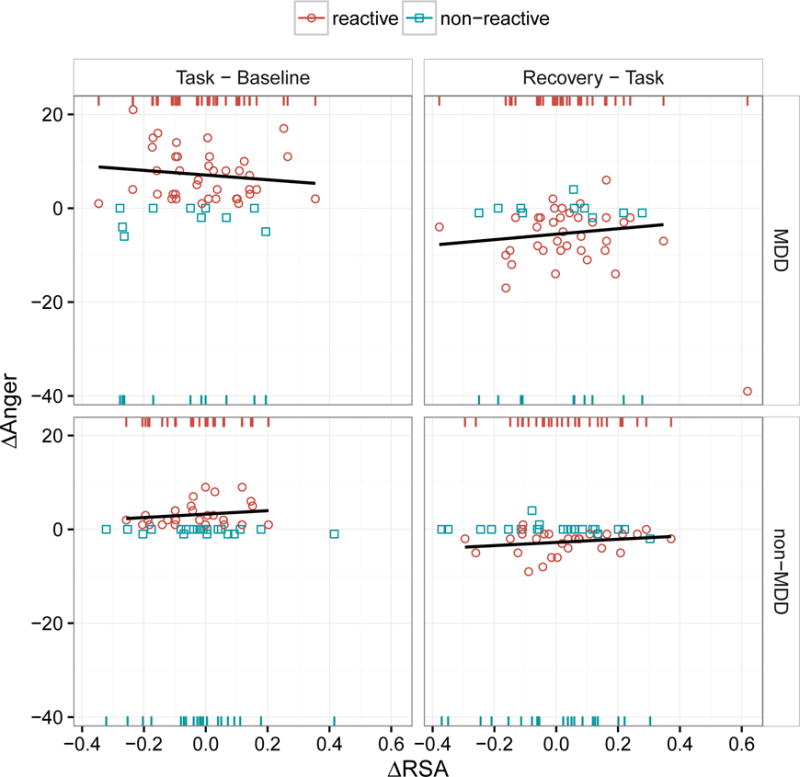Figure 3.

Scatter plots of the lag-1 differences in POMS anger scores (y axis, “Δ Anger”) as a function of the simultaneous lag-1 differences in the logs of RSA magnitudes (x axis, “Δ RSA”) across groups (rows) and the transitions between experimental conditions (columns). The effect of MDD and Δ RSA on anger was modeled in two stages. In the first stage, we predicted whether participants did or did not show increased anger in reaction to the frustrating task, as indicated by the red circles (labeled “reactive”) and blue squares (labeled “non-reactive”), respectively. The red and blue rugs at the top and bottom, of each panel simply reiterate and separate the x-values (Δ RSA scores) by reactive vs. non-reactive individuals, respectively. These rugs, as opposed to the scatter plots, should be used for interpreting the effect of Δ RSA in the context of the logistic models reported in Table 3; in other words, the y-dimension (Δ Anger) is completely irrelevant to these models and is considered separately in the second stage of modeling by fitting a least-squares regression to only those data points reflecting increased anger. The regression lines in these plots (none of which were statistically significant) reflect this second stage and are only fit to the red circles, not the blue squares. There was no evidence that within-individual change in RSA was related to within-individual change in anger, regardless of whether anger induction was modeled as a discrete event or as a continuous process. The presence of MDD, on the other hand, predicted both processes: this can be seen in the the left “Task – Baseline” column in terms of both a greater number of red circles in the MDD vs. non-MDD group (more MDD participants experienced increased anger) and, comparing only the red circles between rows, a greater increase in anger in the MDD group. Note that the change in anger from task to recovery (right column) is roughly symmetrical to the change in anger from baseline to task (left column). Also note the outlier in the top-right panel (Recovery – Task for MDD) showing a very large decrease in anger and a very large simultaneous increase in RSA. This outlier was excluded from the regression line shown for this panel.
